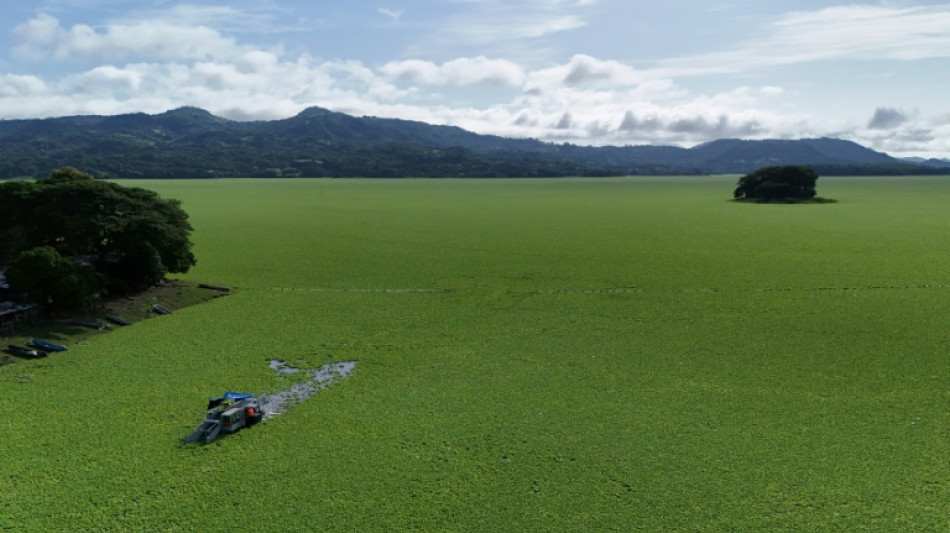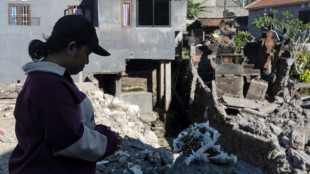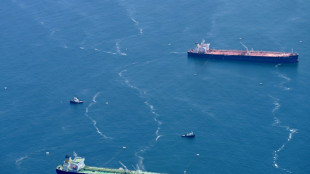

'Water lettuce' chokes tourism, fishing at El Salvador lake
The waters of El Salvador's Lake Suchitlan are normally busy with fishermen and tourists -- but this year, you'd be forgiven for thinking it isn't a lake at all.
The wetland, known for its biodiversity, has been overrun by a floating plant that feeds on chemical pollution, almost completely covering its surface and making it look like a lush, light-green field.
Fed by the waters of the mighty Lempa River, Suchitlan is a 13,500-hectare artificial lake built around 1976, and supplies the Cerron Grande hydroelectric power station.
The massive spread of Pistia stratiotes, commonly known as water lettuce, has paralyzed the local tourism and fishing trades, leaving boatmen without income and restaurants on the shore empty.
"The truth is that the (plant) has affected us every year, but now it has gone too far. Today it's completely covered," Julia Alvarez, a 52-year-old boat operator, told AFP.
The reservoir is home to rich biodiversity with migratory birds on its islands, but now most of its surface is covered by water lettuce, whose spread has been aided by wind and heavy rains.
Boatman Felicito Monroy said the phenomenon meant he has not been able to fish for ten days.
The plant's proliferation is hitting restaurants hard, too.
"Today, people just come, look, and leave right away. They don't enjoy the rides, they don't stay to taste the dishes, because the attraction is the water, the lake," said Johnny Anzora, a 44-year-old restaurant waiter.
Biologist and researcher Cidia Cortes explained that the growth was driven by an influx of "pollution" to the lake, carried by tributaries.
"Heavy metals, aluminum, arsenic, lead... go into those waters, so it's like throwing fertilizer into the water; the algae feed on that too and grow exponentially," she said.
In an effort to eradicate the plant, five dredging barges are working to remove it.
So far, they have cleaned up about 6.3 hectares of the reservoir, equivalent to nine soccer fields, according to the state-owned Lempa River Hydroelectric Executive Commission.
But Cortes warned that unless the root cause -- the inflow of polluted water -- was not addressed, the plants would continue to flourish.
Y.Soderstrom--StDgbl






